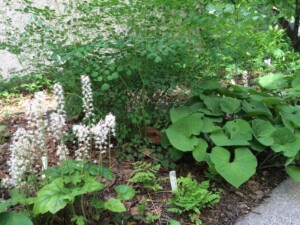
Prairie plants often get top billing when someone talks about native plants, and people might think that if they have a shade situation, they are confined to hostas and pachysandra. Take heart–there are so many wonderful, beautiful native plants for a shady area.
Many of these have evolved in a woodland setting and therefore require leaf litter. Make sure you keep some leaves in the beds.
1.Wild Ginger (Asarum canadense reflexum): A very popular groundcover with its large heart shaped leaves and unusual flowers
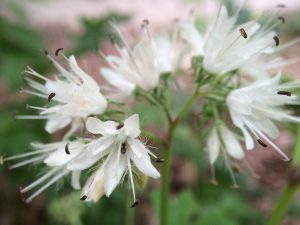
2.Virginia Waterleaf (Hydrophyllum virginianum): Beautiful leaves and lovely fluffy white or pink blooms in the spring, providing early nectar. Will slowly spread through seeding itself, which you will probably welcome. Consider it an edible ground cover as long as your soil has been checked for lead. It is pretty tough–have seen it in the lawns at Morton Arboretum. Called Waterleaf because of the spots that resemble watermarks on a table.
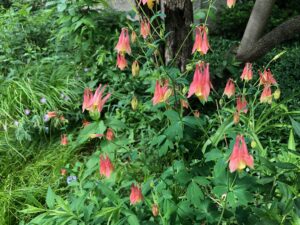
3.Early Meadow Rue (Thalictrum dioicum): Another one that blooms in the spring and has just the most delicate leaves and interesting layered structure; the leaves are a nice blue-green
4.Wild Columbine (Aquilegia canadensis): Another popular plant. Try to get the straight native one with the red flowers; many places sell different cultivars. Hummingbirds use these plants. This plant can grow in part and fun sun too.
5.Ivory Sedge (Carex eburnea): There are so many sedges to choose from. Ivory Sedge remains compact with a tussock habit.
6. Solomon’s Seal (Polygonatum commutatum): Easy to grow. Lily-like foliage which has a blue tinge. Flowers in the spring, bell-shaped cream flowers which hang underneath the stem. Birds appreciate the berries in the fall.
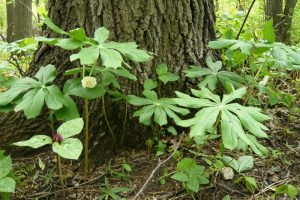
7.Mayapple (Podophyllum peltatum): Interesting plant, looks almost like a small palm tree. Flowers are located under the leaves. Fruit in the fall.
8.Elm-leaved Goldenrod (Solidago ulmifolia): There are a few goldenrods for shade, and Elm-leaved is one–grows about 2; 2 1/2 feet and has golden sprays of flowers. Another nice goldenrod for the shade is Blue-stemmed Goldenrod–stays under 2 ft and blooms well into October. Even shady gardens can provide critical food resources for pollinators in the fall.
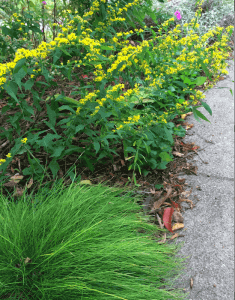
9.Calico Aster (Symphyotrichum lateriflorum): Lovely tiny little white flowers which attract many pollinators in the fall. There are so many asters that grow in the shade; many of which will probably volunteer themselves–some of the more common are Drummond’s Aster, Frost Aster, and Hairy Aster. Short’s Aster is a longer-blooming aster with showy blue flowers. Pollinators adore these flowers in the fall, and the Pearl Crescent caterpillar eats the leaves of the plant (not enough to do any damage they are tiny!).
10. Bottlebrush Grass (Elymus hystrix): This grass gets its name from its interesting seed heads in the fall. Gets about 3′ tall but can be taller.
